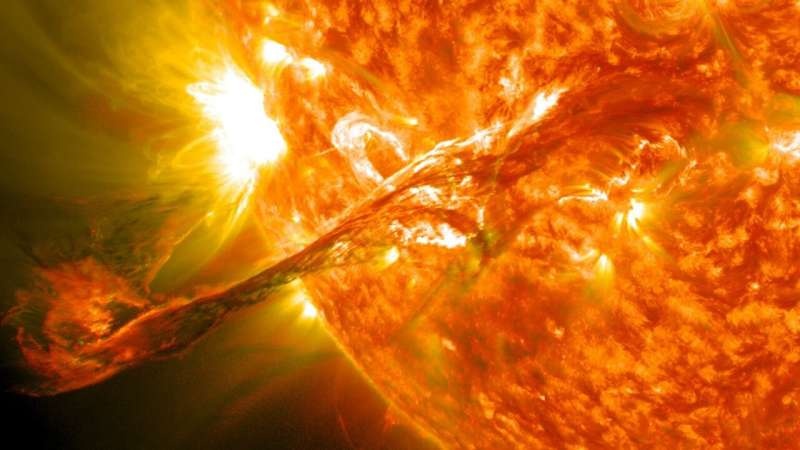Cutting-edge observations from the Daniel K. Inouye Solar Telescope shed new light on how solar flares impact the intricate layers of the sun’s atmosphere, opening up new avenues for understanding this dynamic star.

Revealing the Unexpected Dynamics
Some of the most intense activity from the sun known as solar flares can shoot out huge amounts of radiation and charged particles that damage technology and create dangerous conditions in our planet’s atmosphere.
In general, most of the activity that researchers studied historically is linked to large solar flares on the visible surface of the sun and its uppermost atmosphere. But a recent study led by scientists from the University of Colorado, Boulder has found something unexpected— the rotation of small so-called sunspots, or ‘pores,’ during an only moderately strong C-class flare.
This finding, enabled by the high-resolution imaging from the Daniel K. Inouye Solar Telescope, indicates far more elaborate phenomena at play in the sun’s atmosphere than is obvious as we see it evolve on its massive scale. These smaller phenomena can also happen, in addition to big intense flares that lead to the rotational motions.
This discovery will serve as a line of investigation as scientists continue to examine the complex interplay between the sun’s magnetic fields, charged particles, and its different layers from the visible surface (photosphere) to the outer corona.
Unraveling the Mysteries of Solar Flares
Solar flares are known in part to be caused by the sudden release of stored magnetic energy in the sun’s atmosphere, which then accelerates charged particles and ejects plasma into space. If and when they occur, these events can have widespread effects, from disrupting satellite communications and power grids here on Earth to imperiling astronauts with high-energy particles of radiation.
Although earlier studies had previously shown the massive impacts of high-energy solar flares, new observations from the Inouye telescope have provided additional detail. Their observations revealed that a relatively minor C-class flare was associated with surprising spins of tiny sunspots or pores on the surface of the sun.
The result indicates that the connection between the various layers in the atmosphere of the sun during a flare should be interpreted more complex than previously. The team observed the pre-flare rotation at a short distance from the flare ribbon as opposed to these rotational movements being confined near the flare ribbon where the most intense emissions are.
The researchers suggest that the Lorentz force caused by interactions between the sun’s charged particles and magnetic fields has some kind of effect on these rotational motions. The reorganization of the magnetic field lines in the corona during a flare could induce rotation in the lower atmosphere, researchers said.
This finding will now provide us with a new handle on observing these events and understanding them better. — As to what can then be seen in the future, this discovery will open up a whole new field of solar science case these results could help improve our models of solar CMEs.
Conclusion
Observations from the Daniel K. Inouye Solar Telescope of unprecedented resolution have now revealed surprisingly strong high-frequency dynamical motions in the solar atmosphere, which suggest that we need to revisit our concepts on how solar flares interact with lower atmospheric layers in this dynamic stellar system. But those implications go further — from providing a greater understanding of the space environment and our ability to predict the effects on technology in space on Earth to keeping future astronauts exploring the Moon or Mars safe. With more study, as well unravel the secrets of this part of the sun’s atmosphere, we can anticipate finding out new information that will help us better understand what has shaped and continues to shape our solar system from up above.
